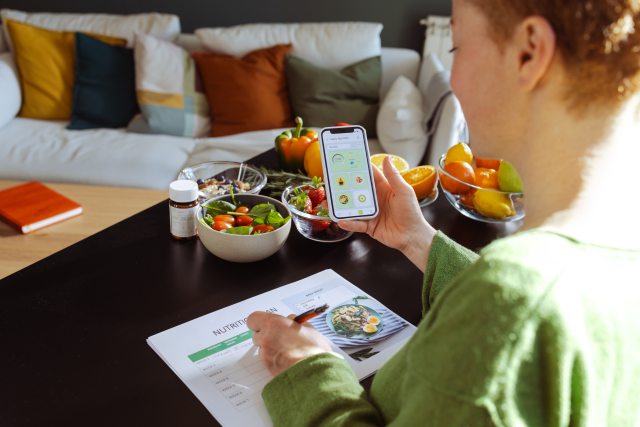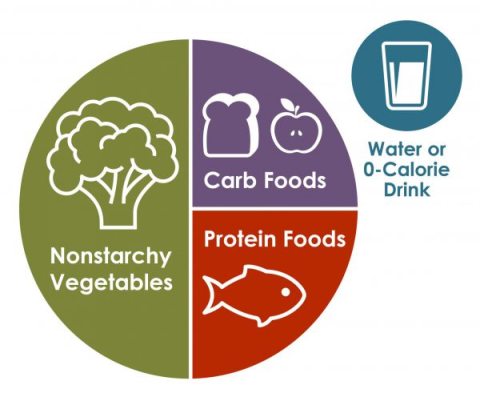This approach to meal planning is great for managing diabetes

Instead of counting calories, start by counting carbs.
If you’re trying to manage diabetes, you know it’s good to keep an eye on how many carbohydrates you eat.
Experts generally recommend the following for daily carbohydrate intake for adults:
- 30 to 60 grams per meal
- 15 to 20 grams per snack
These guidelines apply to all adults. You’ll want to talk with your healthcare provider or a dietitian about how many carbs are right for you, personally. It can depend on your weight, activity levels, medications and goals for your blood sugar. Learn different ways to count carbohydrates in your diet.

“Paying attention to your carbohydrate intake can make a huge difference in managing your diabetes. It isn’t just about the foods, but also the effect they might have on your blood sugar,” says Jennifer Prouse, a PeaceHealth dietitian and diabetes educator.
Start with your plate
The plate method can make meal planning a little easier:
1. Start with low-carb vegetables. On half of your plate put these foods. Not only do they fill you up, but they’re also often versatile and can take on many different flavors without adding a lot of calories. Following are a few good choices:
- Cabbage
- Carrots
- Cauliflower
- Cucumbers
- Lettuce
- Mushrooms
See FDA nutrition information on more vegetables.
If you do the household shopping, stock up on low-
carb vegetables so you always have some on hand. Fresh or frozen. Canned is fine but check that it doesn’t have more sodium than what’s recommended.
2. Add a protein. Fill one quarter of your plate with proteins. These help you feel less hungry and more satisfied. Grilling, sauteing, air-frying or baking are healthy cooking methods for meats. Cooking options for meat substitutes will depend on what it is. For example, you might pan-fry tofu. Here are some sources of protein to choose from:
- Chicken
- Turkey
- Lean beef
- Fish
- Pork
- Tofu
- Eggs
- Beans or lentils
- Nuts
Again, fresh or frozen are equally good, but watch sodium levels on canned items.
3. Allow for some other carbs. Fill the last one-quarter of your plate with carbs. These give your body fast energy. They can also fulfill cravings. Choose vegetables, fruits or grains that are as unprocessed as possible. Examples include:
- Potato or sweet potato (half of a large potato has 30 grams of carb)
- Whole grains such as quinoa, brown rice or barley
- Fruits – carb counts vary widely for fruits
- Apple (a medium piece has 30 grams of carb)
- Cantaloupe (1 cup has 15 grams of carb)
- Grapes (3 ounces have 15 grams of carb)
- Strawberries (1 ¼ cup has 15 grams of carb)
Consider keeping fewer high-carb foods in the house — especially processed foods like bread, crackers and cookies. It can be tempting to eat more if they’re readily available.
“Keep in mind that not all carbs have the same effect on your blood sugar. For example, an apple has a lower glycemic index. That means it doesn’t spike your blood sugar as fast or as much as a food like rice that has a higher glycemic index,” says Prouse.
Learn more about using the plate format for diabetes.
More meal tips
In addition to keeping an eye on the number of carbs, when you’re managing diabetes, it’s also healthy to:
- Eat high fiber foods and proteins first; eat carbs last. This gives your digestive system a head start on foods that can take longer to break down.
- Try a little fermented food. Things like sauerkraut or kimchi are low-carb and can boost your microbiome.
- Watch portion sizes to avoid overeating and keep a balance of nutrients.
- Eat slowly. It takes a few minutes for your brain to register that you’re full.
- Avoid saturated and trans fats as they can raise your cholesterol levels.
- Opt for water or unsweetened drinks to avoid unnecessary calories.
- Go for a 5-10 minute walk after you eat to speed your digestion and reduce blood sugar spikes.






